
Danger level
 | treeline
|
Avalanche Problem

Above the tree line a high avalanche danger will persist in some regions. Natural avalanches are still possible during the day.
Fresh snow and large quantities of wind-drifted snow represent the main danger. Medium-sized and, in isolated cases, large natural avalanches are possible in some places. The fresh snow of the last two days and the wind slabs can be released easily in all aspects and generally above the tree line. The avalanche prone locations are sometimes covered with new snow and are difficult to recognise.
Gliding avalanches are possible at any time, even quite large ones. This applies in particular at low and intermediate altitudes.
The conditions are very dangerous for snow sport activities. Caution and restraint are important.
Snowpack
dp.6: cold, loose snow and wind
dp.2: gliding snow
40 to 70 cm of snow, and even more in some localities, has fallen since Friday. The strong wind has transported a lot of snow. In some places new snow and wind slabs are lying on soft layers.
In its middle, the snowpack is unfavourably layered. Towards its base, the snowpack is largely stable. The sleet gave rise on Saturday to moistening of the snowpack over a wide area at low altitude.
Tendency
The danger of natural avalanches will decrease gradually.
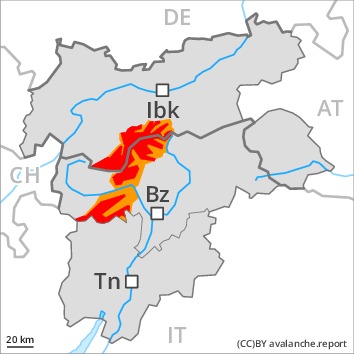
Danger level
 | treeline
|
Avalanche Problem
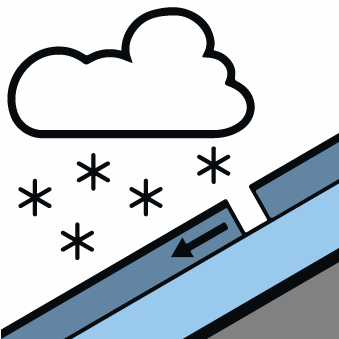 | | New snow |
|  | |  |
 | | Persistent weak layer |
|  | |  |

New snow and weakly bonded old snow represent the main danger.
The danger exists in particular in alpine snow sports terrain. Avalanches can in some cases be released in deep layers and reach large size in isolated cases, in particular in places that are protected from the wind as well as in areas close to the tree line. Caution is to be exercised in areas where the snow cover is rather shallow, as well as at transitions from a shallow to a deep snowpack. Remotely triggered avalanches are possible. Natural avalanches are possible. This applies in all aspects.
The fresh snow and the sometimes large wind slabs can be released easily, even by a single winter sport participant, in all aspects. The number and size of avalanche prone locations will increase with altitude. The avalanche prone locations are covered with new snow and are therefore difficult to recognise.
Caution and restraint are important.
Snowpack
dp.6: cold, loose snow and wind
dp.7: snow-poor zones in snow-rich surrounding
The old snowpack is faceted and weak, in particular in areas where the snow cover is rather shallow, as well as at transitions from a shallow to a deep snowpack. Whumpfing sounds and released avalanches confirm the unfavourable bonding of the snowpack.
30 to 50 cm of snow, and up to 70 cm in some localities, has fallen since yesterday. As a consequence of new snow and wind from variable directions, avalanche prone wind slabs formed in places that are protected from the wind. In some places new snow and wind slabs are lying on soft layers.
Tendency
Slight decrease in danger.
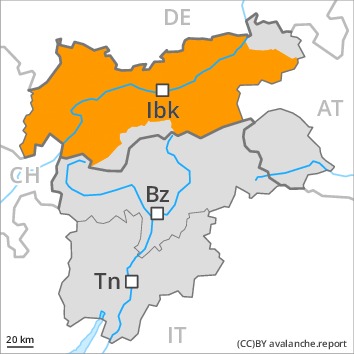
Danger level
Avalanche Problem
 | | Persistent weak layer |
|  | |  |
 | | Wind-drifted snow |
|  | |  |

Weakly bonded old snow requires caution. Wind slabs are to be evaluated critically.
Backcountry touring and other off-piste activities call for extensive experience and restraint. Avalanches can in some cases be released in deep layers and reach large size in isolated cases, this also applies in areas close to the tree line. Caution is to be exercised in areas where the snow cover is rather shallow, as well as at transitions from a shallow to a deep snowpack. Remotely triggered avalanches are possible. Individual natural avalanches are possible, even medium-sized ones. This applies especially on steep shady slopes.
As a consequence of a strong to storm force wind from variable directions, avalanche prone wind slabs formed in the last few days. These can be released even by a single winter sport participant especially on west to north to east facing aspects above the tree line. Mostly avalanches are medium-sized. The number and size of avalanche prone locations will increase with altitude. The avalanche prone locations are sometimes covered with new snow.
Areas close to the tree line and above the tree line: Caution and restraint are important. Below the tree line the situation is more favourable.
Snowpack
dp.6: cold, loose snow and wind
dp.7: snow-poor zones in snow-rich surrounding
Over a wide area 10 to 30 cm of snow has fallen above approximately 1500 m. In particular in the Allgäu Alps, in the Lechtal Alps and in the Mangfall Range up to 10 cm of snow will fall in the next few hours. The strong wind has transported a lot of snow. New snow and wind slabs are lying on soft layers. The old snowpack is faceted. Released avalanches and field observations confirm the unfavourable bonding of the snowpack.
The rain gave rise to softening of the snowpack over a wide area in particular at low altitude.
Tendency
Hardly any decrease in avalanche danger.
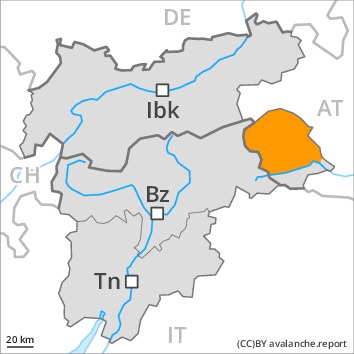
Danger level
 | treeline
|
Avalanche Problem

New snow and wind slabs require caution.
Fresh snow and large quantities of wind-drifted snow represent the main danger. The fresh wind slabs can be released easily in all aspects at high altitudes and in high Alpine regions. The avalanche prone locations are sometimes covered with new snow and are difficult to recognise. More natural dry avalanches are possible, in particular medium-sized ones.
Avalanches can in some cases be triggered in deep layers and reach large size. Caution is to be exercised in all aspects also in areas close to the tree line.
As a consequence of the precipitation more frequent gliding avalanches are possible, even large ones in isolated cases.
Caution and restraint are important.
Snowpack
dp.6: cold, loose snow and wind
dp.2: gliding snow
Over a wide area 30 to 50 cm of snow, and even more in some localities, fell in the last few days. As a consequence of wind from westerly directions, further wind slabs formed. The snowpack will be subject to considerable local variations. The new snow and wind slabs will be deposited on soft layers on steep shady slopes. Adjacent to ridgelines in all aspects: In many cases new snow and wind slabs are lying on a hard crust. In its middle, the snowpack is faceted.
Tendency
Hardly any decrease in danger.
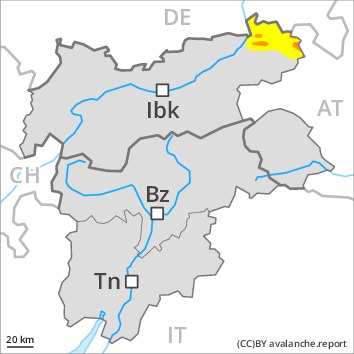
Danger level
 | treeline
|
Avalanche Problem
 | | Wind-drifted snow |
|  | |  |
 | | Persistent weak layer |
|  | |  |

Wind slabs and weakly bonded old snow are to be assessed with care and prudence.
As a consequence of a sometimes storm force wind from variable directions, avalanche prone wind slabs formed in the last few days. Avalanches can in some places be released, even by a single winter sport participant and reach medium size, especially on steep west, north and east facing slopes above the tree line, as well as on steep shady slopes below the tree line. The number and size of avalanche prone locations will increase with altitude. Below the tree line the situation is more favourable.
Snowpack
dp.6: cold, loose snow and wind
dp.7: snow-poor zones in snow-rich surrounding
In isolated cases various wind slab layers are lying on a weakly bonded old snowpack, in particular on shady slopes also in areas close to the tree line. As a consequence of mild temperatures the snowpack will settle.
The rain will give rise to softening of the snowpack over a wide area in particular at low altitude.
Tendency
Hardly any decrease in danger.



















